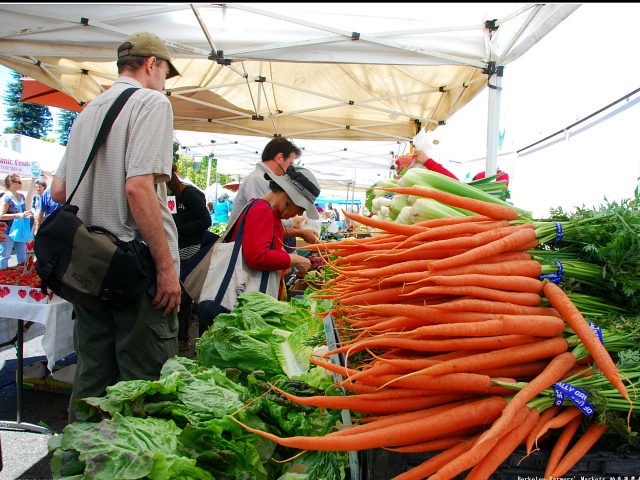A Brooklyn mother shopping in the local Whole Foods noticed something unexpected: prices for fresh fruits and especially fresh vegetables had fallen from a year ago.
This observation is one that could be made by shoppers across America. Fresh fruit prices were down 0.5 percent in March compared with a year ago. Fresh vegetable prices were 4.1 percent lower than they were in March 2016.
This contrasts sharply with the expectations created by many news stories last year, such as the Bloomberg News story featuring California farmer Carlos Castaneda walking through his Napa fields and witnessing a bleak sight: one-quarter of his cabbages were rotting in the fields supposedly due to a lack of immigrant laborers.
Castaneda was featured in a June 2016 Bloomberg News article titled: “Crops Rot While Trump-Led Immigration Backlash Idles Farm Work.” It reported that partisanship and Donald Trump’s “incendiary comments” about illegal immigrants had brought about the “death of meaningful U.S. immigration reform.” The result was “crops withering in the field.”
Bloomberg’s was just one of many stories that appeared last year claiming that farms were suffering from a labor shortage and that crops were rotting in the fields. Many claimed that American households would pay higher prices for food if urgent action was not taken to relieve the alleged farm labor shortage.
Those predictions turned out to be very far off the mark. Prices paid for food purchased for American households declined in 2016, falling 1.3 percent below 2015 levels. It was the first annual decline in supermarket prices since 1967, according to the Department of Agriculture. The price of fresh fruit, arguably the most affected by temporary farm labor, rose 2.2 percent, just about equal to the 2.1 rise recorded in the Consumer Price Index.
And as the Brooklyn mother recently discovered, prices of fruits and vegetables are actually down this year.
In other words, Americans were paying less for the food they put on their table last year despite the widespread complaints of labor shortages and warnings about crops withering. And this year the downward price trend continues and now includes fruits and vegetables.
Undeterred, the farm lobby and its stenographers in American newsrooms are at it again.
“President Donald Trump’s hard line against immigrants in the U.S. illegally has sent a chill through the nation’s agricultural industry, which fears a crackdown will deprive it of the labor it needs to plant, grow, and pick the crops that feed the country,” the Associated Press reported in a recent story.
The AP reports that the American Farm Bureau Federation says “strict immigration enforcement would raise food prices five to six percent because of a drop in supply and because of the higher labor costs farmers could face.”
Even if the farm lobbyists were correct this time around, this would still mean food prices would fall. According to the Agriculture Department, the wholesale prices of fruits grown on American farms are expected to decrease 8.0 to 7.0 percent in 2017, and the wholesale prices of vegetables are expected to fall by 12.0 to 11.0 percent in 2017. If immigration enforcement has the effect expected by the farm lobbyists, it would merely cut in half the expected deflation in food prices.
Consumer prices are also expected to decline in 2017. Fresh fruit prices are forecast to fall 0.0 to 1.0 percent, while fresh vegetable prices are forecast to fall 1.5 and 0.5 percent.
Food is in a deflationary cycle, with prices falling year after year and expected to keep falling. Even if immigration policies are causing a labor shortage, American families are not seeing the effects at the grocery store.

COMMENTS
Please let us know if you're having issues with commenting.